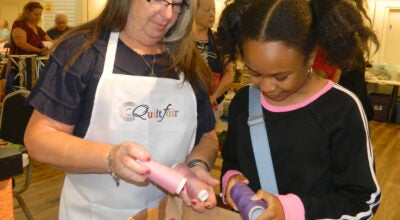Gov. Cooper, state leaders encourage school districts to allow in-person instruction
Published 2:52 pm Tuesday, February 2, 2021

- Gov. Roy Cooper gave the annual state of the state address Monday night. (AP file photo)
Gov. Roy Cooper and state education leaders on Tuesday called on K-12 school districts across the state to allow in-person instruction for all students
“Protecting the health and safety of the people of this state, especially our children and our teachers, has been our goal,” Cooper said. “We know school is important for reasons beyond academic instruction. School is where students learn social skills, get reliable meals, and find their voices. Research done right here in North Carolina tells us that in-person learning is working and that students can be in classrooms safely with the right safety protocols in place.”
A news release said children who rely solely on remote instruction are feeling the negative effects of isolation, including learning loss, mental health challenges and food insecurity. The state’s public health toolkit details specific health and safety protocols K-12 schools must implement to keep students and teachers safe during in-person instruction.
“Even with the thousands of students and teachers attending school in-person across the state, we have seen few COVID-19 clusters in our public schools,” said NCDHHS Secretary Mandy K. Cohen. “Our department will continue to serve our school communities, offering resources and support so we can keep our school doors open.”
In a news release, state officials said evidence suggests that, with prevention measures in place, there are low rates of COVID-19 transmission in primary and secondary school settings even with high rates of community transmission. In addition, ongoing medical studies and peer-reviewed data affirm that children infected with COVID-19 generally have mild or no symptoms, and are less likely to spread the disease.
“Learning loss resulting from COVID has the potential to be a generational hurdle, but the data we have seen shows us that schools can reopen safely if they adhere to COVID prevention policies,” said Superintendent of Public Instruction Catherine Truitt. “For many schools, the logistics of returning to in-person instruction five days per week will be a challenge, but this is absolutely a challenge we must face head on so that all students have a chance to fulfill their potential. With strong prevention measures in place, and the scientific research to back them, now is the time to act. North Carolina’s students cannot lose any more time.”
The statements on Tuesday do not mandate full-time, in-person instruction. Cooper said during his news conference that he believes local control is important. Truitt said she hopes the announcement empowers school districts to require students and teachers to return to the classroom while also offering a remote option.
Rowan-Salisbury Schools Superintendent Tony Watlington said he does not believe the decision will affect the district because it is already operating under “plan B,” a blended model, and has offered an all-virtual option for students since August.
Watlington said there will be a meeting of all superintendents in the state this afternoon and he will have a better idea of any official requirements afterward.
“I don’t think it will be a big impact on us,” Watlington said.
On Jan. 19, Knox Middle School teacher Matthew Beaver died due to COVID-19 and resulted in an outpouring from his colleagues as well as people who want the district to remain in blended learning at the Board of Education meeting last week. Five new cases were reported by the district at Salisbury High School between Sunday and Monday.
Meanwhile, nearby Kannapolis City Schools has been all-remote since it began classes again in January and recently extended the measure through Feb. 15, citing concerns about a pandemic which worsened significantly toward the end of the fall and early January. Things have improved someone statewide later in the month.
KCS Superintendent Chip Buckwell noted state Senate Bill 37, which just made its way out of committee, which would require public schools to send students back to school full time. Buckwell said circumstances are different in all 115 school districts, and it bothers him to be told what to do without being asked and hopes clarity comes from the superintendents meeting.
The state began allowing districts to send elementary students back full time on Oct. 5, but middle and high schoolers haven’t been allowed back in the classroom full time. Many districts have remained virtual or returned to all-virtual learning amid a fluctuating COVID-19 pandemic, including Cabarrus County Schools.




